The Levys Connect Food Cultures
Tradition Kitchens, Julia and Iris Levy's organization, aims to use food to connect people to different cultures.
After 37 years with the Atlanta Journal-Constitution and now with the AJT, , Jaffe’s focus is lifestyle, art, dining, fashion, and community events with emphasis on Jewish movers and shakers.
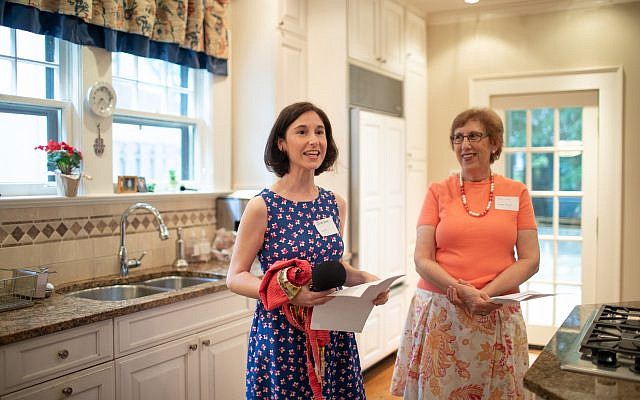
Mother-daughter duo Iris and Julia Levy have new “fish to fry” and more challah to braid. Perhaps Spanish Jewish tapas, or pastrami eggrolls. In an effort to urge families to preserve their own generational recipes, they formed a new startup, Tradition Kitchens, which organizes groups to meet in home kitchens to record and preserve memories.
Iris and Julia have been cooking together since 1986. After growing up in Marietta, Julia moved to New York City for many years. When she moved home about two years ago, she began cooking with her mom. Julia said, “It’s brought back many memories and created new ones. One morning while reading a cookbook, my mom had the idea for Tradition Kitchens.”
Marcia: Explain your concept. You are a nonprofit?
Julia: We’re transforming kitchens into classrooms in neighborhoods around Atlanta taught by locals with stories to share, from bubbe to celebrated chefs to home cooks like you. It’s a cultural, historical and intergenerational culinary experiment. Discover one recipe at a time and cultivate a community along with the classes.
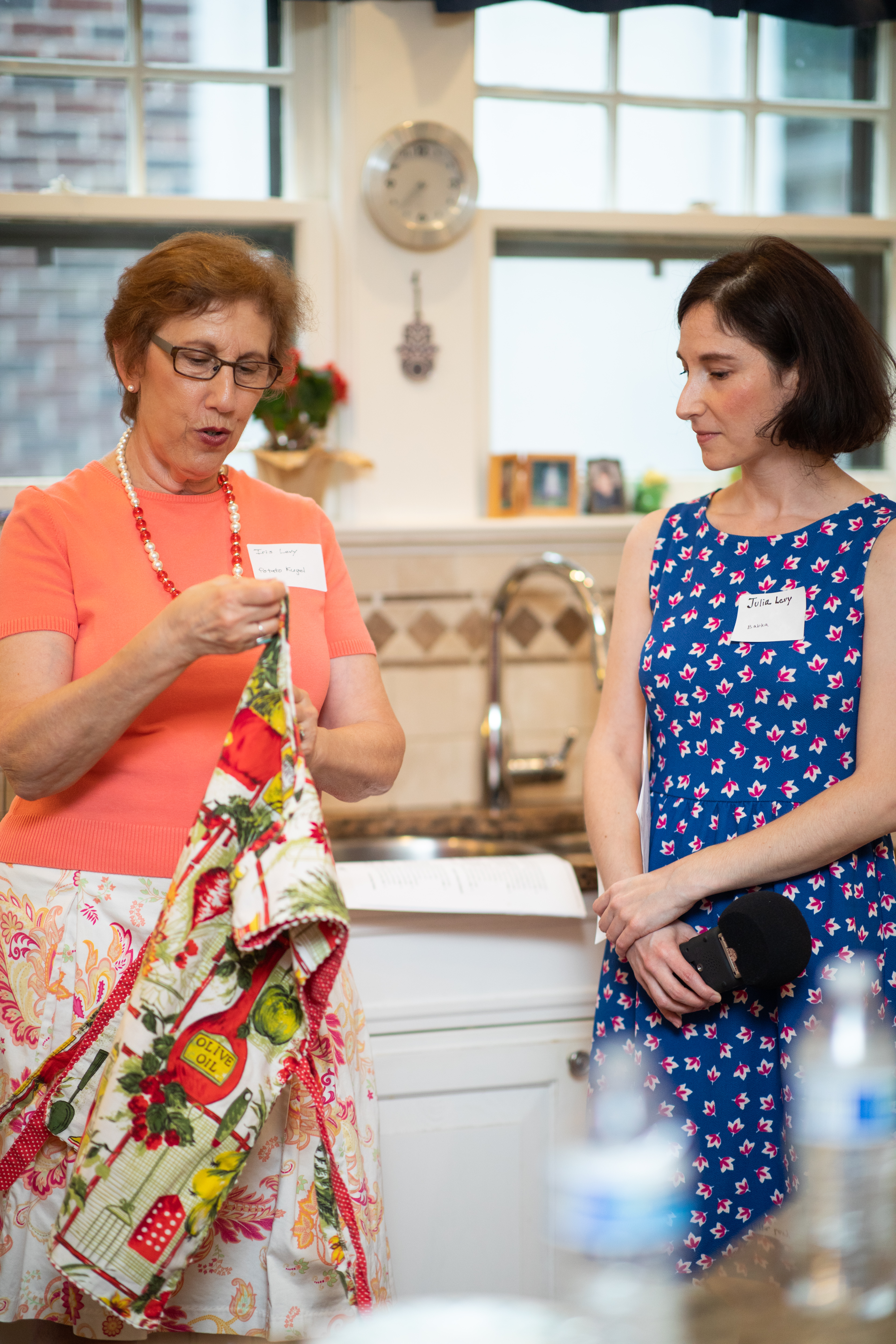
Marcia: How many events do you have per month or year?
Julia: Our classes are pop-up style, which means we post them with a few weeks notice and invite guests to apply. This fall, we’re piloting bimonthly classes. But with the strong interest in attending and teaching, we anticipate expanding the frequency.
Marcia: Are you sharing anything special for Rosh Hashanah meals?
Iris: As we learned about historic culinary traditions, we were intrigued by the Sephardic seder, which features symbolic foods beyond apples for a sweet year ahead. In that spirit, a Spanish chef will be teaching dishes inspired by apples, dates and pomegranates. We’ll also feature fun and relevant recipes on our social media.
Marcia: You have both male and female participants? Jewish and non-Jewish?
Iris: Food connects people so we’re bringing together a diverse group for our classes. We welcome all ages, cultures and genders.
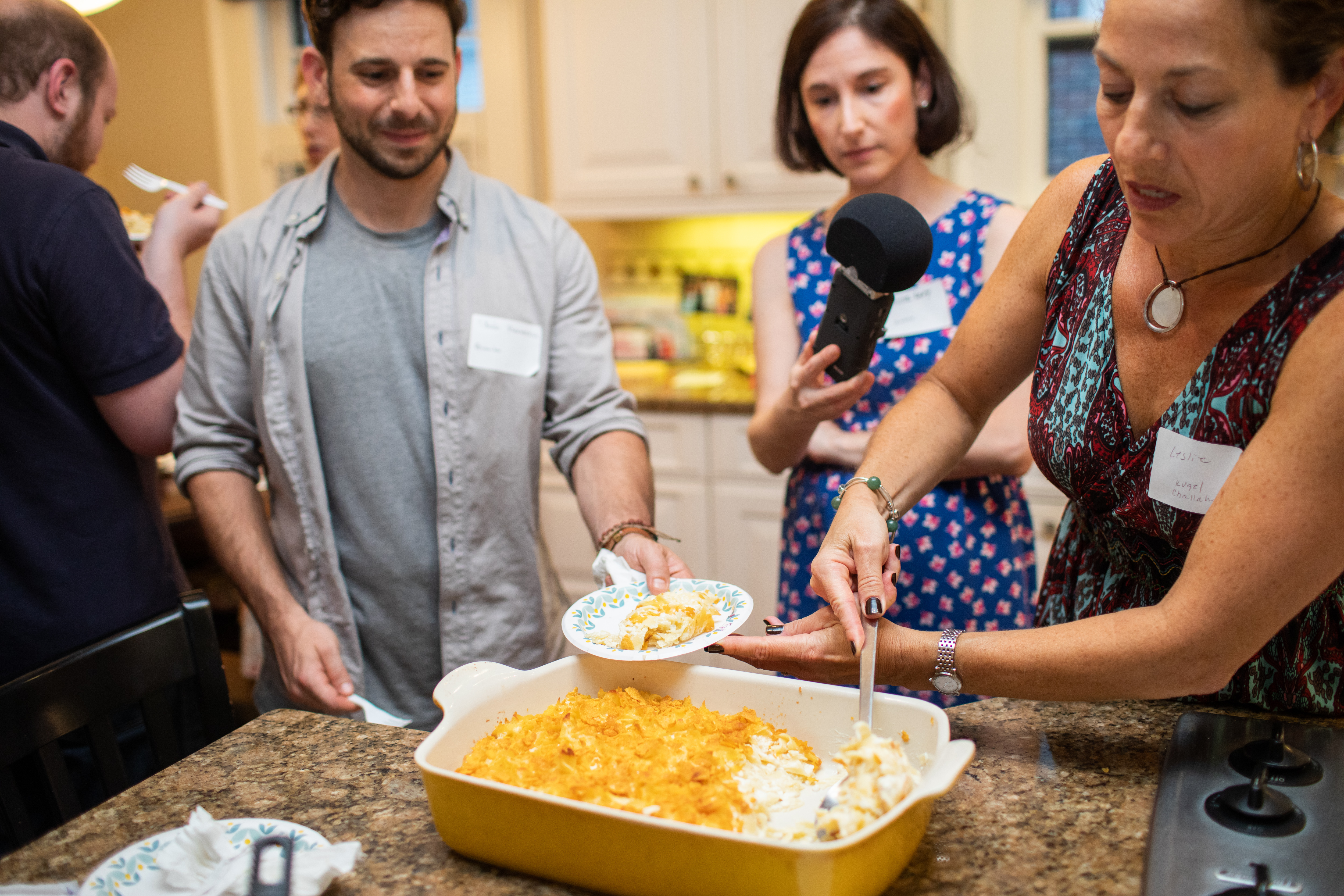
Marcia: Do you have any special tips for Break the Fast this year?
Julia: Bake Leslie Kalick Wolfe’s mother Rosanne’s noodle kugel to break the fast. At our first class, Leslie taught us how to make it and shared her family’s story. It’s delicious and simple with its cornflake crunch.
Marcia: What are three of your own family’s best, most sentimental high holiday recipes?
Iris: My Aunt Helen made the most incredible apple cake with a crust that set the dessert bar high in our family. It had a secret ingredient, orange juice, but we can’t tell you how much!
Julia: Grandma Betty’s rugelach were a centerpiece at every family celebration, including Rosh Hashanah. Combined with sweet jam, nuts, chocolate chips, cinnamon and sugar, they are a nostalgic holiday dessert. It also reminds me of sleepaway camp because she somehow managed to smuggle them in to me in surprise packages.
Marcia: You reached out to Atlanta restaurateurs. Who are they and what did you learn?
Julia: We’re in conversation with many prominent restaurateurs. Aaron Phillips and Ron Hsu from Lazy Betty are partnering with us on an Asian-Jewish fusion class. For a taste of authentic Israeli cuisine, we’ll be collaborating with Tal Postelnik Baum of Aziza. We’re learning about the stories that accompany what they cook.
Marcia: How does one apply for a seat?
Iris: To attend, guests apply for a seat by completing an interest form. We invite them to introduce themselves and their cooking curiosity as we strive to create a class of all ages, backgrounds and locations. Then, via a lottery system, guests are invited to reserve a seat. When we don’t have enough seats, guests who are not selected are placed on a waiting list.
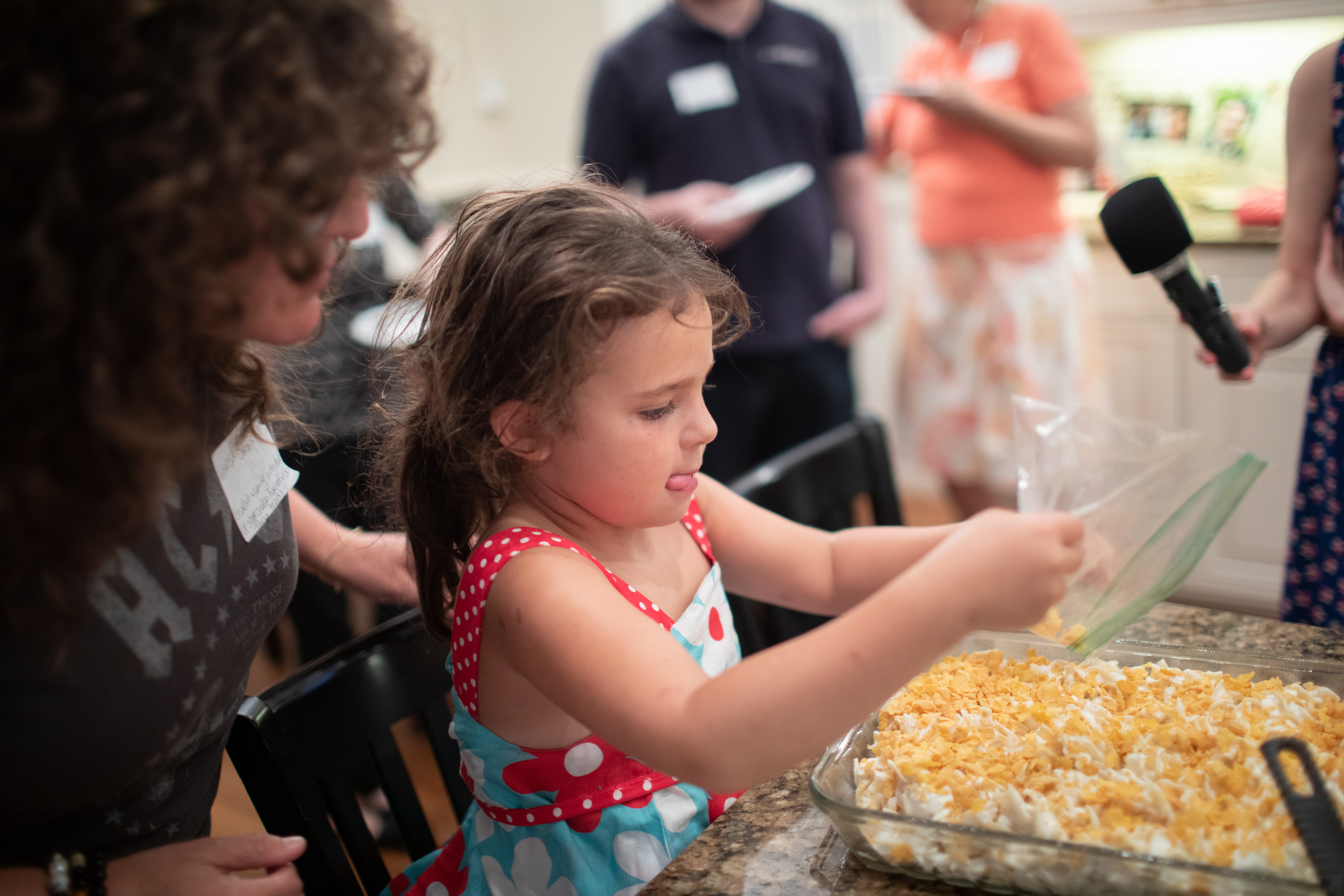
Marcia: The Jewish Federation of Greater Atlanta has given you a grant to do what?
Julia: As recipients of a 2019 PROPEL Innovation Grant from Jewish Federation of Greater Atlanta, we’re part of this year’s class of Jewish Atlanta changemakers. Our grant supports our launch, providing us with advisors and resources to experiment with our creative culinary concepts to stir up social good.
Marcia: What is a “kitchen scribe?”
Iris: Filled with history, family recipes share important stories. We’re recruiting writers of all levels — from budding journalists to accomplished storytellers — to record these memories from their family members or other generations from their community. The audio and written posts will be featured on our social media and website.
Marcia: What’s your favorite food quote? Mine is George Bernard Shaw, “There is no love more sincere than the love of food.”
Julia: “Pull up a chair. Take a taste. Come join us. Life is so endlessly delicious.” – Ruth Reichl.
Here are some of Traditions Kitchens’ favorite holiday recipes:
Rosanne Kalick’s Noodle Kugel
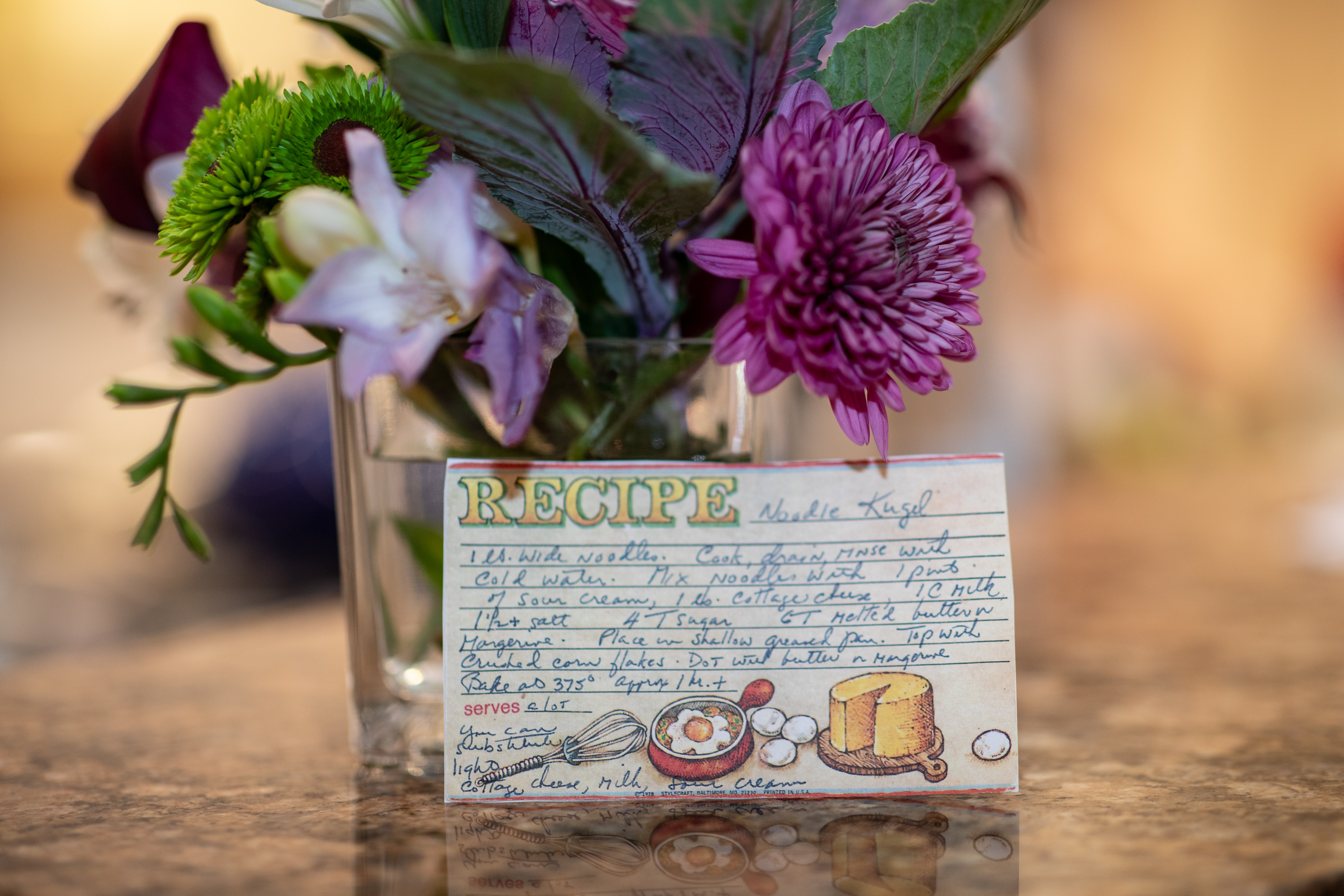
Submitted by Leslie Kalick Wolfe
1 pound wide noodles
1 pound cottage cheese
1 cup milk
1 1/2 teaspoons salt
4 tablespoons sugar
6 tablespoons melted butter or margarine
Cornflakes for garnish
Cook noodles, drain and rinse with cold water. Mix noodles with 1 pint of sour cream. Add cottage cheese.
Place in shallow greased pan. Top with crushed cornflakes. Dot with butter or margarine.
Bake at 375 F for about an hour.
Grandma Dora’s Pryanik
Submitted by granddaughter Olga Zelzburg
1 cup whole milk kefir
1 tablespoon sour cream
1 stick margarine
2 tablespoons honey
Generous amount of walnuts and raisins
1 teaspoon baking soda
3 eggs
3/4 cup white sugar
2 cups flour
2 tablespoons oil
Oil and flour (or crumbs) for the cake dish
Add the sour cream to the kefir. Let sit.
Melt margarine. Add honey. While warm, mix in walnuts and raisins.
Add baking soda to kefir and sour cream. It will bubble and grow. Combine with the margarine mixture.
In separate dish, beat eggs and sugar. Mix in with the rest. Let sit for 15 to 30 minutes.
Slowly add flour and oil. The batter will have a sour cream consistency. Let sit for another 15 minutes.
Spray a cake dish – I use a Bundt pan – with oil and flour (or powder with crumbs).
Warm oven to 425 F. Bake cake for 30 minutes.
Turn off the oven and let sit for another 10 minutes.
Cool and enjoy.
Normandy Apple Tart
Submitted by Thomas Sergio of Olde World Artisan Bread Co.
Pastry:
2 1/2 cups bread flour, plus extra for dusting
1 1/4 cups superfine sugar
4 ounces unsalted butter, at room temperature
1 egg
Splash of cold water
Frangipane filling:
7 ounces unsalted butter, at room temperature
1 cup superfine sugar
2 eggs and 2 yolks
1/3 cup all-purpose flour
1 2/3 cups ground almonds (ALDI stocks these inexpensively)
Splash of Calvados (French apple brandy, also a great after-dinner drink)
4 dessert apples, cored, peeled, halved, and sliced thinly
Apricot jelly, to coat
Preheat oven to 400 F. (Best not to use convection, the top will brown too quickly.)
Combine pastry ingredients in a bowl. Roll out on a lightly floured surface and line a 12-inch tart pan – best one with a removable bottom – very thinly coated with shortening.
Cream the butter and sugar until fluffy and white, then add eggs and yolks one at a time to incorporate. Add Calvados, flour and ground almonds and mix well.
Spread the frangipane filling in pie crust. Fan the apples out over the filling from the edge to the center to form a cross. If the apple slices are small, you can also make six “arms,” which is what I do.
Bake 25 to 30 minutes in the lower third of the oven, until golden brown. The frangipane should be set. Remove from oven and brush with apricot jelly/jam (which has been warmed in the microwave to soften) while the cake is still warm. This imparts a nice glaze but can be omitted.
Serve while still warm.
Wine pairing for dessert: Chablis, or other unoaked Chardonnay.
Tayglach
Submitted by Susan Tregerman in honor of her mother Esther Colchamiro when they used to cook together.
Originally published in “Jewish Cookery” by Leah W. Leonard, Crown Publishing, 1949.
3 eggs
2 cups flour
1/4 teaspoon salt
1/2 teaspoon ginger or nutmeg
Chopped almonds (optional)
Honey Syrup:
1 cup honey
1 cup sugar
1 teaspoon ground ginger
Beat eggs slightly in a mixing bowl. Sift together dry ingredients, except almonds, and stir in to form a stiff dough. Turn out on lightly floured board and knead 1 to 2 minutes.
Pat into ½-inch thickness a small ball of this dough and cut into ¼-inch squares. Remove cut squares to a large plate and proceed with the rest of the dough until all of it has been cut. Or you can roll small pieces of dough between palms to form ¼-inch thick rolls, pencil fashion, and then cut ¼-inch pieces.
Bring honey, sugar and ginger to a boil in a deep pot and drop the bits of dough a few at a time to prevent lowering temperature of syrup.
Cook over reduced heat after all tayglach have been dropped into syrup, about 20 minutes, stirring with a wooden spoon to prevent boiling over. Do not stir while cooking.
Turn over on a wet board and pat with a wet wooden spoon to an even thickness – ½ inch is about right. If almonds are desired, spread evenly on wet board before turning out tayglach mixture as evenly as possible without spreading the nuts too far apart. Let cool before cutting into small squares or diamond spaces 1 to 1½ inches in diameter or finger lengths 1-inch wide.



comments